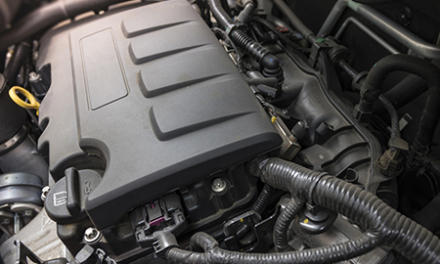As auto manufacturers keep striving to improve car engines and their fuel burning efficiency, fuel systems in cars keep getting more and more complex. A phenomenon that’s arisen as a result of these innovations is that fuel delivery issues are being misdiagnosed. In some cases, technicians have been returning brand new fuel pumps thinking they are defective, when in fact the actual cause of the issue was a defective fuel pump relay or crankshaft sensor.
It’s crucial that technicians keep up with the latest developments in fuel system technology. Today’s engines are light years beyond what they once were. The good news is that technicians can avoid common mistakes in fuel system diagnosis with some education and preparation. Let’s consider how modern fuel systems operate, how and why they fail, and what the best fixes are:
- Issues with Airflow: A defective or dirty airflow sensor can cause surging and stalling that is often associated with a worn fuel pump. With some import cars, a vane airflow sensor emits a signal that activates the fuel pump relay. If air is leaking, the sensor won’t work and the engine won’t start. Test for this problem by removing the air filter, then manually opening the sensor vane slightly during engine cranking. If the fuel pump is then able to activate, you’ll know the issue is the sensor and not the fuel pump.
- Clogged Fuel Filters: A clogged fuel filter will cause rapid fuel pump wear; check to see if this is the issue. Fuel filters should be replaced per manufacturer’s recommendations as well as when installing a new pump. Some fuel filters are located inside of the fuel module and can only be changed as the complete assembly. Make sure if you are replacing the fuel pump inside of the module the filter is not clogged.
- Inaccurate Fuel Readings: Fuel level must be accurately measured by the Powertrain Control Module (PCM) to detect leaks by evaporation. Because of this, some newer configurations include a module requiring 20 minutes or more to compute actual fuel level. Without this insight, some technicians could assume the gas tank is half-full when it’s not. An incorrectly installed strainer might also interfere with the fuel level sensor float arm to create a higher fuel reading. Dented fuel tanks can also cause a false reading.
- Running the Relays: The fuel pump relay is an electrical switch controlled by a circuit in the PCM. Its contact points can eventually wear out, reducing or stopping the electrical flow to the fuel pump. Reduced current flow can also reduce fuel pump speed, causing the engine to be difficult to start in times when the battery voltage is lower, as in cold weather.
- Silent But Working: Fuel pumps of the past typically produced noise a few seconds after the ignition was turned on. Today, the pump is relatively silent in many vehicles, causing novice technicians to think it’s defective. A fuel pressure gauge should be used to determine if the system is delivering optimal fuel pump pressure.






![[Vehicle Fitment]: Compatible with Dodge Dakota 2004-2010, Compatible with Durango 2004-2009, Nitro 2007-2011, Ram 1500 2004-2010; Compatible with Jeep Commander 2006-2010, Grand Cherokee 2005-2010, Liberty 2004-2012; Compatible with Mitsubishi Raide...](https://m.media-amazon.com/images/I/41n6pS4S7WL._SL100_.jpg)
![[PRODUCT INFORMATION] - HiSport 0280158020 fuel injector pack in 6 PCS , 4 holes, made of metal & composite plastic, function more consistent and smoother, more accurate adjustment to account for extremes of cold temperatures,easier starting [FITMENT...](https://m.media-amazon.com/images/I/41ieCPI5NHL._SL100_.jpg)
![[Vehicle Fitment-1]: Compatible with Jeep Grand Cherokee 2011-2015, Wrangler 2012-2017; Compatible with Ram 1500 2013-2017, C/V 2012-2015, ProMaster 1500 2014-2018, ProMaster 2500 2014-2018, ProMaster 3500 2014-2018; Compatible with Volkswagen Routan...](https://m.media-amazon.com/images/I/51chzwIUaDL._SL100_.jpg)


